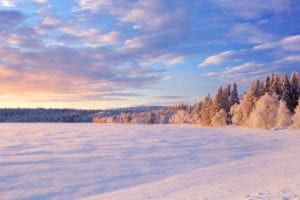I live in Minnesota and we are currently experiencing a polar vortex. In practical terms, this means that it is cold outside. We are expected to reach -27º tonight with wind chills of -50º or more.
In nature, seasons are a cyclical process. It is something that occurs in a repeating pattern. When fall turns to winter, it is a time for plants to go dormant. Deciduous trees drop their leaves to bring nutrients to their roots. Winter is a time for quiet and rest that prepares for the rapid growth once spring brings. Bears hibernate, and humans learn how to keep warm and dress for the cold, but nature doesn’t fight the cold. Instead, it conserves energy for the eventual blossoming of the next season in the cycle, providing organizational lessons.
As humans and organizations, we have learned to adapt to the cold, but as individuals and organizations, we may be missing the real lesson that nature has to offer. Nature uses winter as a time to go inward and conserve energy because it is a necessary part of a cycle of the seasons. What if organizations could see quiet and reflection as a valuable investment of time? Often, activity in organizations is a measure of effectiveness. But activity and being busy rarely correlates with effectiveness and productivity. This preoccupation with action goes against the lesson that nature gives us. Nature pauses and has created the cycle of the seasons to restore itself for the next season.
The Benefits of Slowing Down
Winter and extreme cold remind us to pay attention to what is happening around us. Today, given how cold it is, we don’t want to be out in the weather for more than a few minutes or we risk hypothermia. Paying attention to the risks and adapting accordingly is the smart thing to do. When we slow down, we can see what is happening around us more clearly. Organizational lessons from slowing down help us plan and effectively lead.
Diana Hunt and Pam Hait capture this idea in their book The Tao of Time (1990). It was written at a time when we were all enamored with time management. Their book approaches time management from an Eastern philosophical framework. They believe that time has a geography to it. It doesn’t flow the way our clocks on the wall implies where one second is the same as every other second. Sometimes time moves slowly and at others, it speeds by. If we slowed down enough, we would be able to sense the rhythm of the world around us. We would take time to feel the flow of time. The authors suggest when time is flowing uphill, it is time to accomplish small goals. However, if time is flowing downhill, take out your biggest challenges, because they will be easier to accomplish with time on your side.
The Window of Opportunity and Accomplishment
Slowing down also helps us sense timing in the system. In every project, decision, or goal, there is a window of opportunity that opens up within the interactions of the system you are working in. If we do our work within that window, we accomplish things more easily with less effort. If we miss this window and launch our work before or after the window opens up, it will take more time, energy, and cost to accomplish our goals.
I used to teach people how to canoe. When you are canoeing on a rapidly flowing river there is a technique to get across the current and to the opposite bank. You place your paddle at a specific angle that uses the current of the water to propel you across the river. People who don’t know this technique paddle like mad using muscles and speed to power through the current. They end up on the other bank down river and exhausted. I think of the window of time as slipping across the current by simply holding your paddle at an angle and letting the current take you across the river.
Can Our Organizations Learn to Move at Different Speeds, Like Nature?
Cold weather gives us an opportunity to conserve our energy, slow down, and adapt to the conditions outside. Organizations rarely appreciate the notion of slowing down to go fast. Team and organizational leaders could increase productivity if we understood that renewal is a part of the creative process. Think of the cow grazing in the field. Some might think the cow would be more productive if we just hooked them up to the milking machine 24/7. These people don’t see the whole cycle. Cows need time to graze and chew their cud. Hanging around in the field is essential to their ability to produce milk. Maybe innovation and creativity work the same way. In nature, winter gives us one of many organizational lessons to reflect and go inward – that this time and space is connected to the blossoming that comes in the spring.
Dr. Kathleen E. Allen is the author of Leading from the Roots: Nature Inspired Leadership Lessons for Today’s World (2019) and President of Allen and Associates, a consulting firm that specializes in leadership, innovation, and organizational change. She writes a blog on leadership and organizations that describes a new paradigm of leadership that is based on lessons from nature and living systems at www.kathleenallen.net






